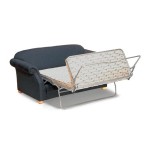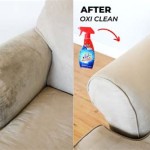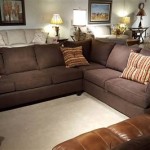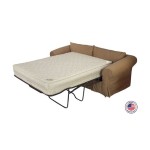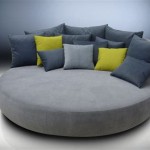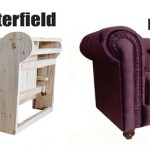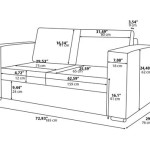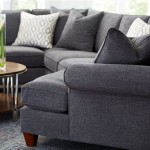The Integration of Sofas into Dining Spaces: Comfort and Style
The conventional dining room setup typically involves a table surrounded by chairs. However, interior design perspectives are evolving, with the integration of sofas into dining spaces gaining traction. This trend represents a fusion of comfort and style, offering a more relaxed and inviting dining experience. Exploring the nuances of incorporating a sofa into a dining area involves considerations of space, style, functionality, and material selection.
The shift towards sofa seating in dining areas reflects a broader movement towards creating multi-functional living spaces. Modern homes often feature open floor plans, blurring the lines between traditional rooms. In such environments, a sofa can serve as a versatile seating option, providing both dining and lounging capabilities. This adaptability is particularly appealing in smaller homes or apartments where maximizing usable space is crucial.
The selection of a sofa for a dining table is not a simple matter of aesthetics. It involves careful consideration of several factors to ensure both comfort and practicality. The appropriate height and depth of the sofa, as well as the material and design, all play a significant role in creating a functional and visually appealing dining area.
Optimizing Space and Layout
The first consideration when integrating a sofa into a dining space is the available space. Unlike individual chairs, a sofa requires a more considerable footprint. Careful measurement and planning are essential to ensure the sofa fits comfortably within the designated area without obstructing movement or overwhelming the room. The sofa should be proportional to the size of the dining table and the overall dimensions of the room.
The layout of the dining area must also be carefully considered. A sofa typically occupies one side of the dining table, with individual chairs or benches placed on the remaining sides. This arrangement provides a balance between comfort and practicality. Consider the flow of traffic around the table and ensure there is sufficient space for people to move freely. A sofa placed too close to a wall or another piece of furniture can create a cramped and uncomfortable dining experience.
In smaller dining spaces, a corner sofa can be an effective solution. It maximizes seating capacity while taking up less floor space than a traditional sofa. A corner sofa can also create a more intimate and cozy dining atmosphere. However, it's crucial to ensure the corner sofa doesn't dominate the room or impede access to other areas.
The placement of the sofa relative to natural light sources is another critical factor. Ideally, the sofa should be positioned to take advantage of natural light without being directly exposed to harsh sunlight, which can cause fading and damage to the upholstery. Thoughtful consideration of lighting can enhance the overall ambiance of the dining area and create a more inviting and comfortable space.
Selecting the Right Style and Design
The style and design of the sofa should complement the existing décor of the dining area. A cohesive aesthetic is essential for creating a visually appealing and harmonious space. Consider the overall style of the home – whether it's modern, traditional, minimalist, or eclectic – and choose a sofa that aligns with this aesthetic. The color, fabric, and shape of the sofa should all contribute to the overall design scheme.
For a modern dining area, a sleek and minimalist sofa with clean lines and neutral colors can be an excellent choice. Leather or microfiber upholstery can lend a sophisticated and contemporary feel. In a more traditional setting, a sofa with classic details, such as rolled arms and button tufting, may be more appropriate. Velvet or linen upholstery can add a touch of elegance and warmth.
The height of the sofa is a crucial consideration for dining comfort. The seat height should be appropriate for the height of the dining table, allowing diners to sit comfortably and easily reach their plates. A sofa that is too low can make it difficult to eat comfortably, while a sofa that is too high can feel awkward and out of proportion. Generally, the distance between the seat and the tabletop should be similar to the distance typically found with chairs.
The depth of the sofa seat is also important. A seat that is too deep can make it difficult to sit upright and maintain good posture while dining. A shallower seat is generally more conducive to comfortable dining. Consider the overall shape of the sofa as well. A sofa with a straight back provides better support for dining than a sofa with a sloped back. Consider back cushions and whether they provide adequate support.
Material and Durability Considerations
The choice of material for the sofa upholstery is crucial for both aesthetics and practicality. The material should be durable, easy to clean, and resistant to stains and spills, especially in a dining area where food and drinks are frequently present. Several materials are well-suited for dining sofas, each with its own advantages and disadvantages.
Leather is a popular choice for dining sofas due to its durability and elegant appearance. It is relatively easy to clean and maintain, and it can withstand considerable wear and tear. However, leather can be expensive and may not be suitable for homes with pets or small children. Consider the variety of leather, as some are more durable and stain-resistant than others. Top-grain leather is a better choice than bonded leather for areas that experience regular use.
Microfiber is a synthetic fabric that is known for its softness, durability, and stain resistance. It is a good option for families with children or pets, as it is easy to clean and maintain. Microfiber is also relatively affordable, making it a budget-friendly alternative to leather. However, microfiber can sometimes look less luxurious than other materials.
Linen is a natural fabric that is known for its breathability and elegant appearance. It is a good choice for creating a relaxed and sophisticated dining area. However, linen is more prone to staining and wrinkling than other materials, so it may not be the best option for high-traffic areas or families with children. Consider a linen blend with synthetic fibers for increased durability.
Velvet is a luxurious fabric that can add a touch of glamour to a dining area. It is soft to the touch and visually appealing. However, velvet can be difficult to clean and maintain, and it is prone to showing wear and tear. Consider the pile of the velvet and opt for a shorter, denser pile for increased durability. Stain-resistant treatments are highly recommended for velvet upholstery.
The frame of the sofa is also an important consideration for durability. A solid hardwood frame is the most durable option, while engineered wood or metal frames can be more affordable alternatives. Ensure the frame is well-constructed and sturdy to withstand regular use. Check the joints and connections to ensure they are secure and well-reinforced.
In addition to the upholstery and frame, the cushions of the sofa should also be considered. High-density foam cushions provide the best support and durability. Feather-filled cushions are more comfortable but require more maintenance and may not be as durable. A combination of foam and feathers can provide a good balance of comfort and support. Consider the construction of the cushions and whether they are removable and reversible for easy cleaning and maintenance.
Incorporating a sofa into a dining space requires careful planning and consideration. By optimizing space, selecting the right style and design, and considering material and durability, it is possible to create a dining area that is both comfortable and stylish. The result will be a versatile and inviting space that can be enjoyed for years to come.

Walnut Sofa Table Brick Mill Furniture

Living Room Meets Dining The New Way To Eat In

Look Inside An Early 20th Century Shingle Style Getaway In The Hamptons Dining Room Design Kitchen Banquette Upholstered

Modular Banquette Set Pottery Barn

When A Banquette Isn T In The Budget Go For Kitchen Sofa West Main

Cozy Up To A Loveseat At The Table

Bloom Couch Dining Table Home Decor

Polo Dining Sofas Jab Furniture

Sofa Dining Bench Design Ideas

Sofas Small Or Large Can Soften Up Your Dining Room

